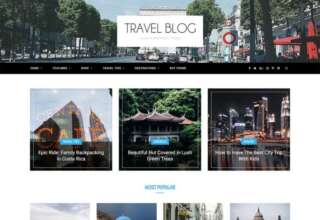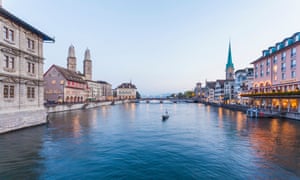
Although it’s routinely placed at the top of lifestyle rankings, Zurich is rarely, if ever, rated as one of Europe’s cultural capitals. There’s a perception that it’s a bankers’ city – a Swiss Square Mile without any West End to escape into. While it is true that high salaries and a strong currency mean Switzerland’s biggest city is expensive for visitors, with some planning, and a focus on culture instead of cuisine, it makes for an enjoyable break, whether or not it is made part of a skiing holiday.
The city boasts cultural big-hitters including the Kunsthaus (see below), one of Europe’s great modern art museums, and Museum Haus Konstruktiv (hauskonstruktiv.ch), which showcases “concrete, constructive and conceptual art” in a former electricity substation. Zurich-West, a former industrial district, is a hub for contemporary art, design, food and architecture. The whole city is relatively car-free and bike-friendly.
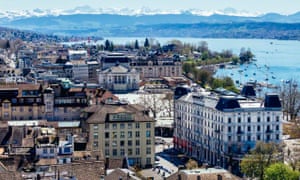
The city has great rail and bus connections to many of the country’s stellar ski resorts, and great sledging on the Ütliberg, Zurich’s own small mountain (870 metres); once the snow melts, the latter is a popular hiking and mountain-biking spot.
From this month, Zurich will be celebrating the centenary of the Dada movement, which came into being on 5 February 1916 with the opening of the Cabaret Voltaire nightclub. War was raging across Europe and the Swiss city was a haven for pacifists, exiles, artists and dropouts. Dada principals Tristan Tzara, Hugo Ball and Francis Picabia kicked off a movement that influenced surrealism, beat poetry, the US’s 1960s “downtown music” scene and pop art.
From 5 February to 18 July, Cabaret Voltaire will host 165 Days of Feast, which looks at the ideas behind 165 Dada-related poets, visionaries and thinkers in a cycle of performances, readings and other events, including a Dada “mass” honouring Lady Gaga.
From 5 February until 1 May, the Kunsthaus hosts Dadaglobe Reconstructed, an exhibition of self-portraits, photomontages, drawings, book designs, poems and essays sent to Tzara in 1921. The National Museum, Museum Haus Konstruktiv and Museum Rietberg will host art shows, and Zurich’s main railway station will put on a dance event on 13 May.

The city is also hosting Manifesta, a roving biennial contemporary art festival. The very Swiss-sounding theme is What People Will Do for Money, and shows and talks promise to debate and deconstruct Zurich’s prowess in finance, tech and urbanism.
The Dada centenary is also a celebration of art over real estate. After its brief moment of glory in 1916, the Cabaret Voltaire building was left to decay, serving a variety of commercial uses until, in 2002, it was occupied in protest at plans by owner Swiss Life to convert it into luxury apartments. The squat was a success and, two years later, it reopened as a cool cultural space in the otherwise quaint and bourgeois Old Town.
What to see
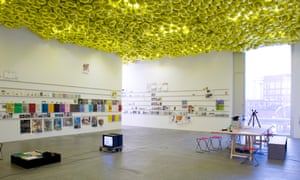
Getting around
Before leaving the airport, get a ZürichCARD travel and discount pass. Zurich is a public transport nirvana, with trams, trolley buses and trains running frequently, punctually, quietly and swiftly all day – with some night services, too. The pass covers all of these, plus the airport transfer, with free or reduced admission to most museums, a 10-20% discount in some shops and half-price city tours. Pedal bikes, e-bikes and kids’ bikes can be hired for no charge at a range of locations – take ID and a £14 deposit.
• zuerich.com/zuerichcard, valid for 24 hours (£15.50) or 72 hours (£31); bikeszuerirollt.ch (deposit £14)
Kunsthaus
Zurich’s world-class gallery has a strong early 20th-century section, with important works by Switzerland’s own Alberto Giacometti plus Munch, Picasso and Matisse, and impressionists and post-impressionists including Manet and Van Gogh.
• kunsthaus.ch, £15, closed Mondays
Kunsthalle and Migros galleries
These two contemporary, White Cube-style art spaces, at 270 Limmatstrasse in Zurich-West, are the best chance you’ll have of discovering a 21st-century Dadaist.
• kunsthallezurich.ch, migrosmuseum.ch, £14 joint entry or free with the ZürichCARD
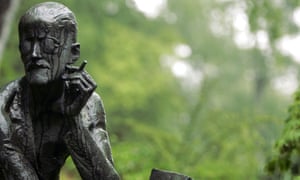
Fluntern cemetery
Take tram 6 from the station – Zurich Hauptbahnhof – up the hill towards the zoo (Zürich Zoologischer Garten), next to which is the Friedhof Fluntern cemetery on Zurichbergstrasse. Here lie the graves of James Joyce and his muse and wife, Nora Barnacle, and that of Bulgarian author Elias Canetti. Kept preened and bereft of leaf litter by a small army of gardeners, it’s a very Swiss necropolis. If, however, you need some decay and corruption, it’s a short walk over to the Fifa HQ, a vast glass-fronted edifice that opened in 2007 at a cost of £165m. A further outdoor attraction is the riverside Alter Botanischer Garten (the old botanical garden) on Talstrasse in the city centre.
Guildhalls (self-guided walk)
In 1336, Zurich’s first independent mayor, Rudolf Brun, established the guild laws, effectively shifting power from the abbeys in favour of the merchant nobility. The city’s commercial clout was established there and then. The handsome guildhalls (zunfthäuser) lend themselves to a walking tour. See the bakers’ guild (Oberdorfstrasse 20) and then go down to the east bank of the river to see the guilds of the carpenters, builders and wainwrights, the food and wine dealers, and the textiles and spice merchants at numbers 40, 52 and 54 Limmatquai, respectively. In the same area – close to the Rathaus (town hall) – are guildhalls for black-, silver- and goldsmiths (Marktgasse 20) and tailors (Stüssihofstatt 3); over the river are the mansions of the weavers (Münsterhof 8) and saddlemakers, painters and winemakers (Münsterhof 20).
Stained glass windows
There are beautiful windows created by artist Marc Chagall in 1967 at theFraumünster church; Sigmar Polke’s windows in the Grossmünster are also stunning.
Where to eat

Zurich food tour
Join a six-stop walking tour of food and drink outlets around the Viadukt retail centre and fashionable Zurich-West for an insight into the gastronomic culture of the city.
• £58pp every Friday, 4-7pm, starting at the entrance to the Markthalle indoor market, zuerich.com
Baltho Küche & Bar
The newly opened Marktgasse Hotel’s sophisticated but informal restaurant serves Swiss specialities, such as veal patties and capuns (sausage wrapped in Swiss chard) with Vals mountain cheese, as well as Italian and French fare enlivened by tangy Asian and Latin American sauces.
• Meal for two including wine from £82, Marktgasse 17, +41 44 266 10 14,balthokuechebar.ch

Zeughauskeller
Housed in a 15th-century armoury, this is the ultra-trad venue in which to drink foaming ales and try the Zürich standard known as geschnetzelte: strips of veal in a creamy white-wine and mushroom sauce.
• Meal for two with beer £69, Bahnhofstrasse 28a, +41 44 220 15 15,zeughauskeller.ch
St Jakob
There are four branches of this bakery with a social conscience dotted around the city. It employs disabled staff to turn out fresh pastries and bread, as well as pralines, truffles, biscuits and syrups.

Loft Five
This casual, lively lunch space next to the station does good salads and daily specials. Its excellent burgers make it a favourite with local workers.
• Meal for two with glass of wine from £48, Europaallee 15, +41 44 755 50 50,loftfive.ch
Zurich Food
The city is launching its first serious city-wide food festival (foodzurich.com) from 8-18 September, bringing together al fresco stalls, restaurant tastings, cooking classes, debates and a communal picnic.
Where to drink
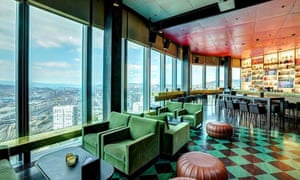
Clouds Bar
Sweeping views, craft beers and wines by the glass are on offer at the top of the 36-floor Prime Tower, which is the tallest building in Switzerland.
• Maagplatz 5, clouds.ch
Cabaret Voltaire
A great place for sipping absinthe among Dada’s ghosts, the space also has a shop selling souvenirs and art-themed gifts. Entrance to the space is free but there will be a charge for any special exhibitions and shows during the Dada centenary.
• Spiegelgasse 1, cabaretvoltaire.ch
Conditorei Schober
At this mid-19th century grand cafe, the thick carpets and baroque interior calm even the kick of a double espresso. It’s great for pastries, too.
• Napfgasse 4, conditorei-cafe-schober.ch
Where to stay
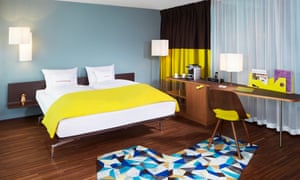
25hours Hotel Zurich West
This funky, 125-room budget hotel, by local designer Alfredo Häberli, is in the Zurich-West district. It is filled with contemporary art and has an innovative restaurant, Neni. Rooms range from bunk beds to suites and there’s free Wi-Fi, sauna and bikes.
• Doubles from £93, 25hours-hotels.com
Pension Fürdich
The upper floors of a family-run cafe in Zurich’s multicultural district 4, across from the Bäckeranlage park, has 18 bedrooms each individually decorated with an overriding vintage, homely feel. Every three rooms share a toilet and bathroom.
• Doubles (room only) from £86, fuerdich.ch
Zurich Youth Hostel
It’s basic, it’s pretty communal and it’s half an hour’s walk from the main sights, but this hostel is close to the lake, and is clean and affordable.
• Dorm beds from £28 B&B, en suite doubles from £95 B&B, lunches and dinners from £14, youthhostel.ch
Did you know?
One early Dadaist often omitted from the history books (and sadly also from the list of 165 legends for the centennial festival) is Cyril Seaton, a lace pattern designer from Nottingham who, via Lille and the trenches at Verdun, found himself hanging out at Cabaret Voltaire with the artists and even performing “sound poetry” (nonsense verse) using a megaphone. George Melly called him “the sexy surrealist from naughty Nottingham”.
[Source:- theguardian]




